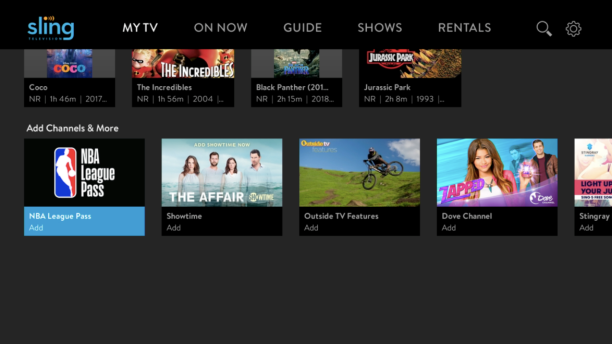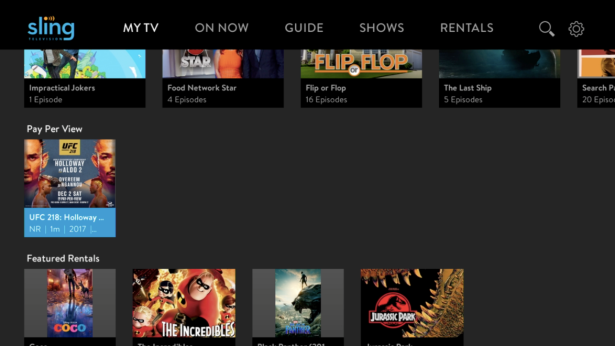Sling TV, the first to deliver an over-the-top TV service aimed at cord cutters, is shaking up its business. The company announced today it’s raising the base price of its core package of more than 30 channels, including ESPN, by $5 per month, to now $25 per month. But it’s also rolling out free content and à la carte channel subscriptions, similar to Amazon Channels, in order to attract a new audience.
The service would not be the first to inch up its pricing.
YouTube TV in March also raised its prices by $5 per month. It’s now $40 per month, which is more in line with competitors like Hulu ($40/mo) and DirecTV Now ($35/mo).
That means, even with the price hike, Sling TV remains one of the more affordable options for live TV, a DVR and access to sports via ESPN.
Unfortunately, though, existing customers aren’t being grandfathered in to the old pricing structure — just like back in the cable TV days, your monthly bill will simply increase. And there’s nothing you can do except cancel.
The pricing changes affects only those on Sling’s core offering, Sling Orange. Those with expanded service (Sling Orange + Sling Blue), will continue to pay $40 per month. And the optional add-on packs will remain at $10 per month.
To woo subscribers, Sling TV is also now launching free content.
When you launch the Sling TV app, you’ll now see more than 100 hours of popular TV shows and movies to watch without a subscription, including “Wrecked,” “At Home with Amy Sedaris,” “Good Behavior,” “Flip or Flop” and more. The idea here is to attract viewers — particularly those with lapsed subscriptions — and encourage them to come back and watch. The company hopes its former customers will choose to restart their subscription after some time.
Perhaps the most significant change is that Sling TV is going à la carte.

One of the biggest draws for Amazon Channels, which reportedly accounts for more than half of direct to consumer video subscriptions, is that you can pick and choose which ones you actually want to watch. Sling TV is now doing the same.
Without a base subscription, customers can subscribe to: Showtime ($10 per month), CuriosityStream ($6 per month), Stingray Karaoke ($7 per month), Dove Channel ($5 per month), Outside TV Features ($5 per month), UP Faith & Family ($5 per month), Pantaya ($6 per month) and NBA League Pass ($28.99 per month).
Stingray Karaoke, Dove Channel and Outside TV Features are new channels launching today, which, combined, add more than 10,000 titles to Sling’s on-demand library.
The company says more à la carte channels will arrive over time.

In addition, Sling TV will offer pay-per-view (PPV) events and more than 5,000 movies that can be watched without a monthly subscription. The company previously offered UFC and boxing matches via PPV — the first for a live streaming service — so expect more of the same here.
“When we first launched Sling in 2015, we set out to create an entertainment experience that put our customers first, offering unprecedented flexibility and control – no annual contracts, no hidden fees and the ability to customize programming,” said Warren Schlichting, president of Sling TV, about the changes. “The new Sling evolves the experience even further by providing access to great content without anchoring customers to a base subscription.”
The changes to the service will be made available through a new user interface that’s arriving first on Roku devices, starting today. It will come to other devices in the near future, Sling TV says.
from TechCrunch https://ift.tt/2N5os0J
via IFTTT
Comments
Post a Comment